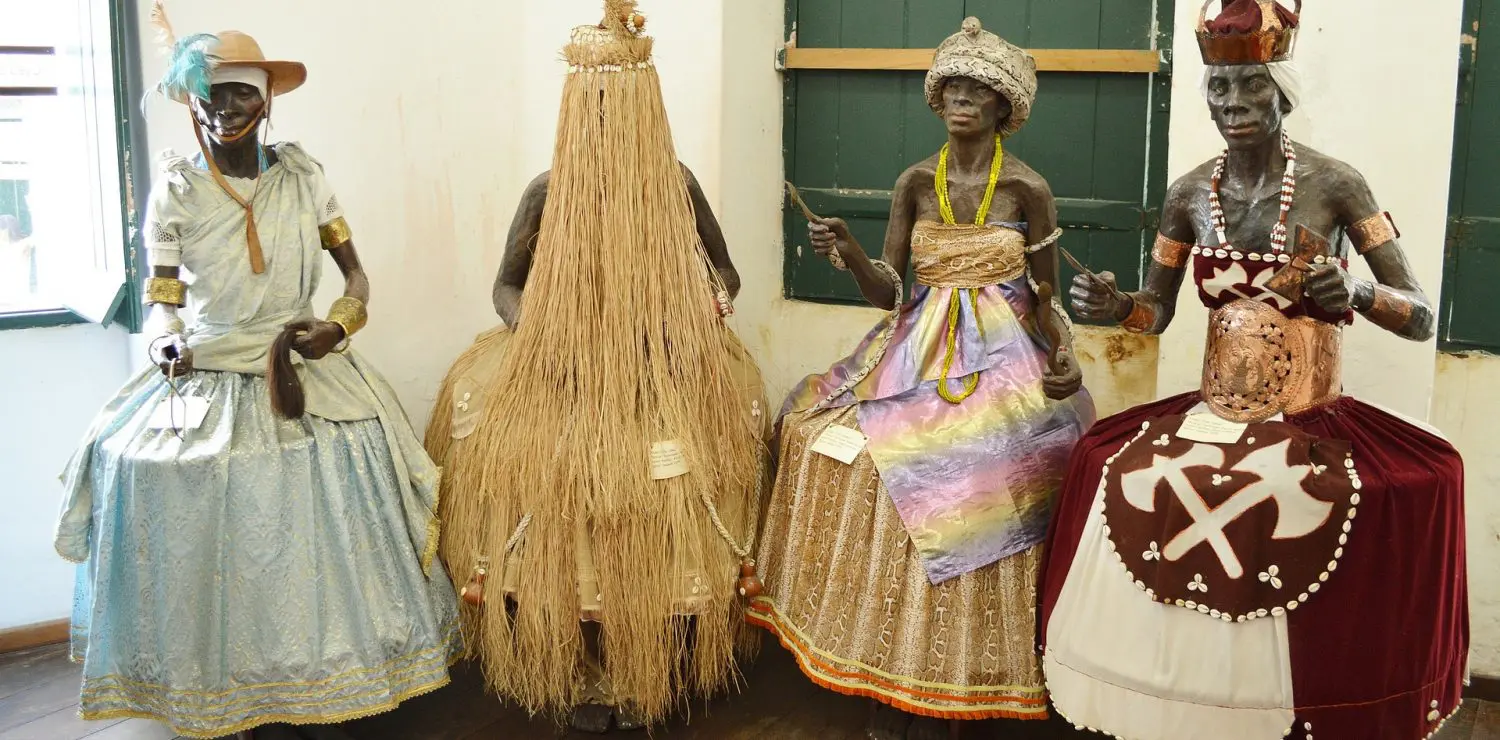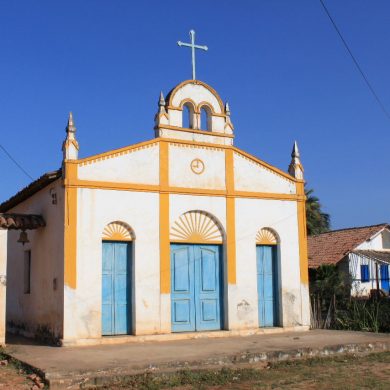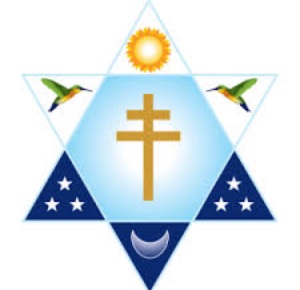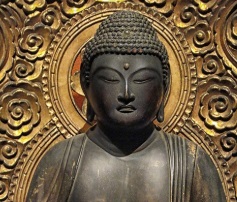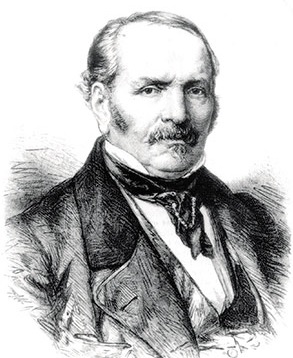Alongside the two great monotheistic religions that are Catholicism and Protestantism, another spiritual path is actively taken by Brazilians, Candomblé. Far less defined in its “borders” than the aforementioned, this syncretism is composed of African reminiscences mixed with certain rites of Christianity.
Candomblé is a curious mixture between the Christian beliefs of the Portuguese colonists and African rites forcibly brought to Brazil by the slaves taken between the sixteenth and nineteenth century. It is also practiced in other forms in some of the neighboring countries such as Uruguay, Paraguay, Argentina and Venezuela. But it is in Brazil that it takes on its historical dimension.
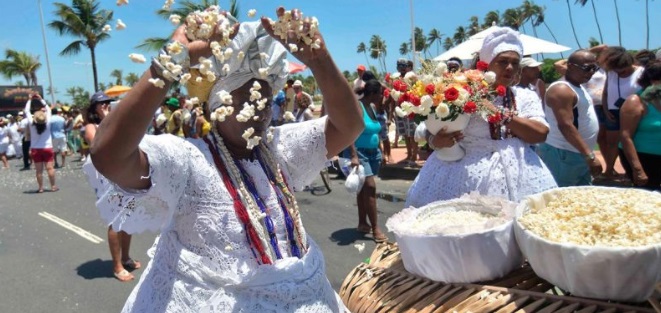
Counting precisely the number of practitioners of Candomblé is relatively difficult because of the porosity towards other religions (many Catholics admit to practicing candomblé), but it is estimated that the number of followers in Brazil tally up to about 3 million. In any case, it is one of the strongest popular beliefs currently in the country and it affects all layers of society. It includes rites based on celebration, dance and music, which is perfect for a people who enjoy partaking in major celebrations, whether religious or otherwise.
Candomblé of Brazil
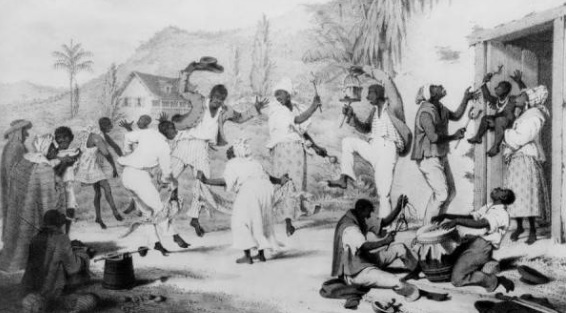
A belief more or less tolerated
During times of slavery, Africans taken forcibly by slave traders to the new land of Brazil fought their fear by taking refuge in the practice of their ancestral beliefs. These beliefs were of course, outlawed by the colonizers, causing the slaves to dissimulate their beliefs under adoration of the Christian saints. Hence this original mixture.
These venerations allowed the oppressed to maintain a tenuous link with their African past, to support the morale of the community, and at the same time to stand in solidarity with the harshness of their conditions and the cruelty of their masters. Masters who were still quite reluctant to condemn such practices brutally: they had a vital need for the labor of their captive workforce and, when they happened to come across certain ceremonies – theoretically forbidden – they were more or less pretending not to notice.
The economy of Brazil was based on the yield the slave drivers could produce, so the authorities had no interest in violently repressing these rites, which explains the relative goodwill that Candomblé has enjoyed through the centuries. As for the church, even though it openly condemned these “irreverent” beliefs, it could only sit idly by as it too was dependent on the landowners yield for survival.
Despite its theoretical prohibition by the church and, in the sixties and seventies, by the dictatorship, Candomblé slowly progressed in Brazilian society, it is now officially recognised and protected. Some places of worship, the “terreiros” (houses, estimated at 2250 in the country) even receive a government subsidy.
Candomblé obviously remains frowned upon by the church, but also by tele-evangelists and other preachers who accuse it as being disruptive and a nuisance. In fact, it has strongly permeated popular culture, especially in Salvador de Bahia, which was one of the largest slave landing ports. It is no coincidence that one of the biggest celebrations of Candomblé, the famous Festa do Bonfim, takes place in this vast ocean city.
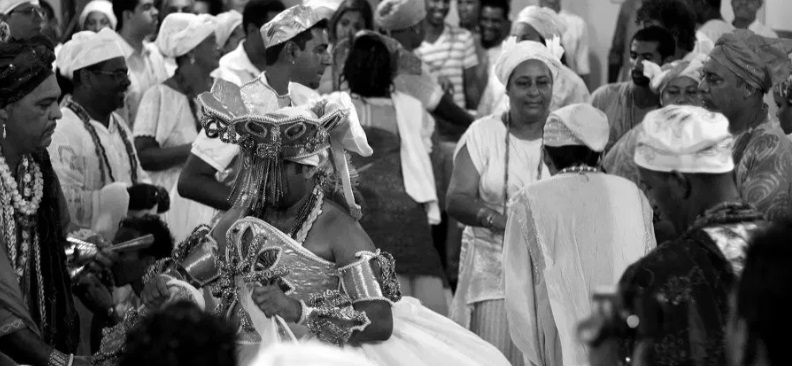
A variety of Candomblés
There are several types of Candomblé in Brazil, originating from the different African countries from which the slaves were brought from. The first Candomblé established in Brazil, the Bantu (or Umbanda) dominated until the nineteenth century. The Dahomey also introduced a variety of Candomblé, but the most celebrated is that of Nigeria, from the ethnic Yoruba. It is from this syncretism that appeared the lineage of priests and priestesses of Candomblé, the “pai and mãe-de-santo“, that one consults as one would go to see a healer or a seer.
Candomblé is the worship of divinities of totemic and family origin, orixás, each attached to a natural element such as fire, earth, river, sea, etc. Each orixá is characterized by a set of colors, and objects that represent it. It is an immaterial force present in nature, and each human being is chosen by an orixá at birth, who will later be identified at a ceremony by a priest. During certain ceremonies, one can “contrario” which allows an orixá into the body of a human being through a rite of initiation.
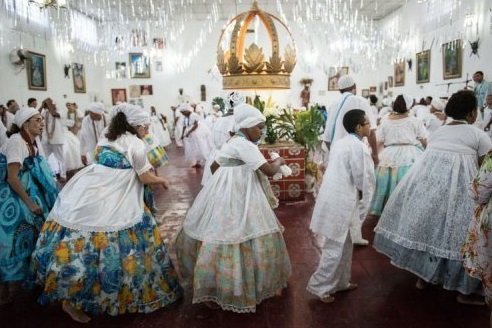
Organization and hierarchy of Candomblé
The prayers of of Candomblé are said through incantations (usually in the Yoruba language), accompanied by offerings, songs and dances, hence the very festive side of the ceremony. Contrary to popular belief, Candomblé is a monotheistic religion, only the names of the deities change according to their country of origin. The number of main deities honored in major Brazilian cities is estimated at sixteen.
During the ceremonies, orixás are called to enter the “landiros” by song and dance, but also thanks to sacred grasses and food, each orixá having a food that relates to him. In Bahia, for example, a city with renowned cuisine and flavors, all dishes made from palm oil (dendê) such as Moqueca are sacred dishes of Candomblé.
Like all religions, Candomblé does not escape the tutelage of hierarchy. There are seven stages, or degrees, ranging from the simple novice (Abiâ) to the chief of terreiro (Babalorixa). The latter is the only one able to make a decision in relation to the faith, no one can act on their own without having referred to them beforehand. Like any dignitary, they know the sacred writings and conduct the ceremonies.
Candomblé is an integral part of the customs of the entire population. Brazilians will make offerings to Lemanja, the goddess of the sea during major ceremonies on December 31 in Rio or February 2 in Bahia lemanja. They will also tell the future thanks to “buzios”, divination using cowrie shells. Almost everyone knows their orixá and it is this supernatural protective presence that drives Brazilians, regardless of their origin and social level, to attach themselves to these mystical rites that go back to their distant ancestors from the other side of the Atlantic Ocean.
